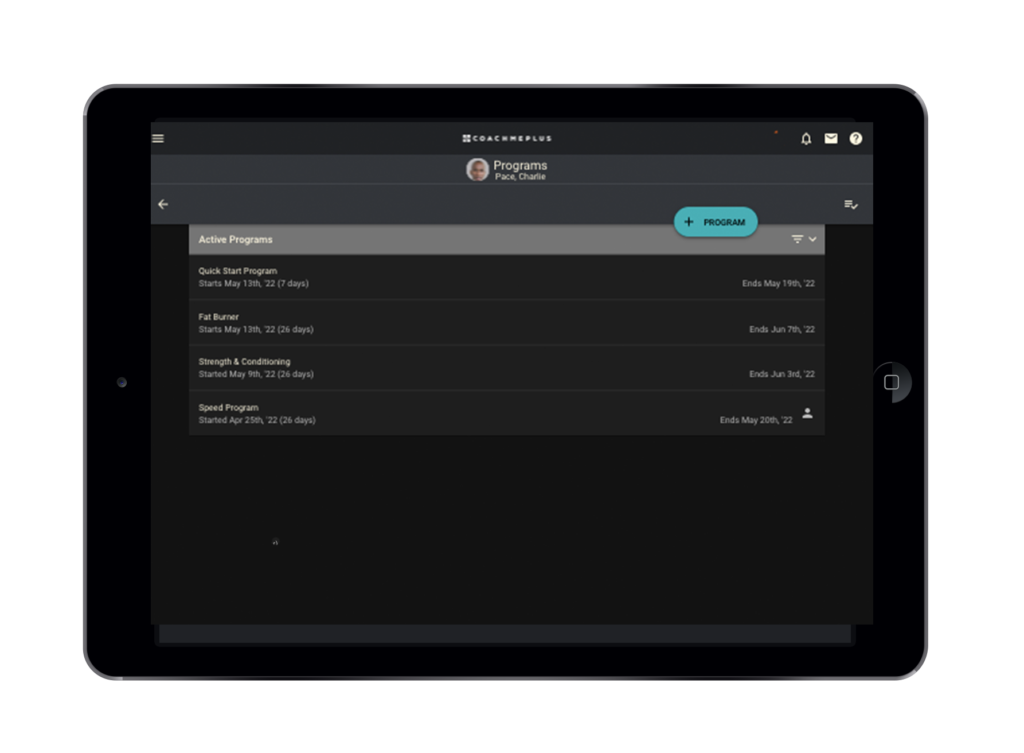
What is Block Periodization?
Block Periodization, also known as the annual approach, is a planning structure that focuses on long-term growth instead of maximizing short term gains. It uses Macro, Meso, and Micro training cycles to prepare an athlete for peak performance and growth. The macrocycle is the overall year long goal. The meso cycles and micro cycles help you focus on the development of the designated skills. For example, with a sport like a division 1 basketball team this would be 9-10 months where a trainer works actively with athletes. The cycles would include training off-season, pre-season, and in-season, with a break during the postseason where the athlete focuses on active rest.
In an ideal world, the athlete would have no injuries and would have a successful year. However, when an injury occurs, it helps to have smaller goals that you can adjust to meet the yearlong goal despite injury or other problems.
In a group or team setting like basketball where there is a movement to position-less gameplay, Block Periodization can be used by assigning the same blueprint to the whole team, but giving modifications to certain players. For example, a taller player would have a different lever arm and the amount of work is greater because it has a longer distance to travel. So the players worked with the same exercises in the same cycle, but with different expectations. In football, once you start the offseason, you would have GPP for all the athletes with a goal to prepare for the upcoming season. Once the season begins, cycles change drastically based on position. Their needs for peak performance vary.
Macrocycles Goals
- Offseason – Hypertrophy, Muscle Endurance and Aerobic Capacity
- Preseason – Elevate Performance capacity, Strength & Power (force)
- In Season – Maintain Strength and Power
- Postseason – Active Rest
Your goal is to increasing your expression of power and rate of force development. Improving your strength is how to have an increase in power.
Rate of force development (trying to be explosive with force movements)
Expression of power – how well you can use the strength you have been building. How you are applying the strength. If you don’t have a strength base, you will have some power, but are you maximizing your expression of power?
Mesocycle/block (4-6 weeks)
- Accumulation – High Volume, Lower Intensity/Specificity
- Realization – Explore adaptations at a lower intensity to deload and peak
Microcycles/ Periods(1-2 weeks)
- Preparation
- Competition or testing
- Transition or recovery
Training Day (1 day – the actual workout)
- Technique & Execution
- Safety – RPE awareness, Injury status, etc.
Offseason & Preseason
Strength coaches are looking to get a certain baseline in the offseason. At the end of a season, it is helpful to have an assessment to plan for the offseason goals. This allows coaches to guide athletes on where they can focus on their own. The baseline of a freshman with no lifting experience versus a 5th year senior will look different. Once you begin preseason training, the baseline defined in off season guides how to increase hypotrophy, muscle endurance, and aerobic capacity.
Throughout the year the circuits and daily workouts see carry-over as the goal is to continue to build throughout the season. For example, you will see similar exercise with different variations and different accessory lifts. However, no matter where in the year you are, the workouts will make sense as a full experience. (The exception will be during the post season when your coaches are promoting active rest.) During the offseason the goal is general physical preparedness (GPP), improving ability across all areas of fitness. As the players begin the preseason, and the season progresses the workouts will begin to become more sport and position focused.
In CMP you can quickly modify a circuit you have already built and assigned to a whole team. This can be to reflect different intensity, power metrics, or modify and customize variables or components for each athlete’s need.
Who Benefits from Block Periodization
Teams with clear macrocycles can obviously benefit from the Block Periodization style. However, individual clients also benefit. Many trainers work in blocks to build a client to where they want to be, even if it is a wedding, race, or special event they are preparing for.
For any trainer’s new client, you need to look at their base. They need an alarm phase where new exercises and training are added. A new client could have a 4-6 week general preparedness block that you build off of based on how their body adjusts.
In a sport similar to powerlifting where there are competitions throughout the year, the macrocycles tend to be more flexible since athletes need to peak throughout the year, not just for certain times of the year. Their “in-season” is all year, making the macro cycle different, but the meso and micro cycles can still be used to improve performance. An athlete hits peak performance for 7-14 days. So you will have to plan accordingly to appropriately deload to prepare for these competitions.
Why it works
For the body to grow, it needs to experience changes. You can’t always just increased volume or just increased intensity. By changing what you adjust, you initiate the alarm phase. This is where your body is able to adjust to the new stressors. After this you must deload so your body has time to grow into the changes brought on by the alarm phase.

Whether your training plan is through Block Periodization or not, there needs to be changes to variables with each cycle through the alarm then deload phase athletes grow.
A major goal of Block Periodization is to avoid over-training. When you are doing the same exact exercise. You need breaks too so you don’t overwork your Central Nervous System.
To build a person to be stronger and more powerful overall there needs to be some kind of structure. This helps keep a focus on overall wellbeing. If an athlete isn’t feeling sore, you don’t just increase intensity to make sure they “feel it”. You need to see an overall improvement, not a day to day sore-ness. This lets you go less on gut feelings and more on metric based plans.
The way your body works is there can be times of plateauing, or even a performance decrease if there is a time of supercompensation period. A regression can happen when your body is making changes, but then you can just take off with improvement. The regression happens when your body is adapting to the changes.
CMP and Block Periodization

So with CoachMePlus you can use the same blueprint for every year. (Check out this Guide to Planning and Periodization) Once circuits and exercises have been programmed into the software, you can assign them at any time. However, you are not locked into the blueprint. Once a team’s program and larger block of workouts are assigned coaches can adjust workouts for each individual to meet their specific needs and goals.
Even with a general template, if an injury comes up, you can change something for one specific athlete. If there are other issues you can completely scrap a workout and have an athletic trainer plan a new workout for teams without making a problem for the rest of the team. If the Strength coach made adjustments for an injury, the Athletic Trainer can look at those changes then make additional modifications or totally change something. CoachMePlus offers easy permissions assignments allowing coaches, athletic trainers, therapists (or any other person) specific permissions to see or edit programs or workouts. This allows several people to monitor and help build each athlete as they need.
Start a CoachMePlus trial here.

Recent Comments